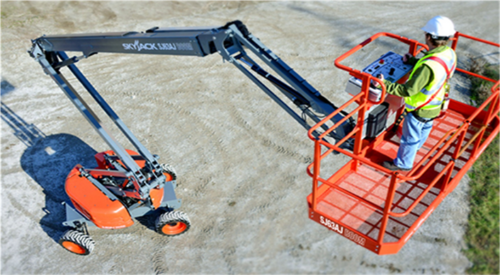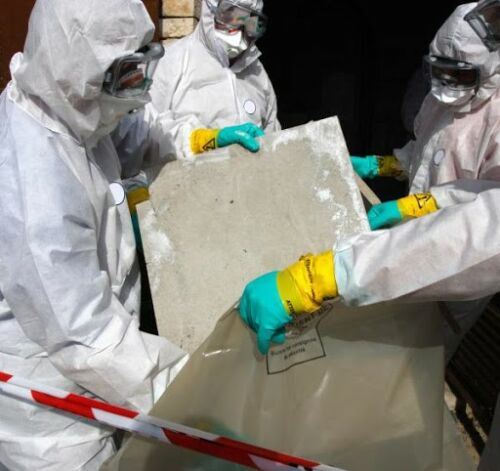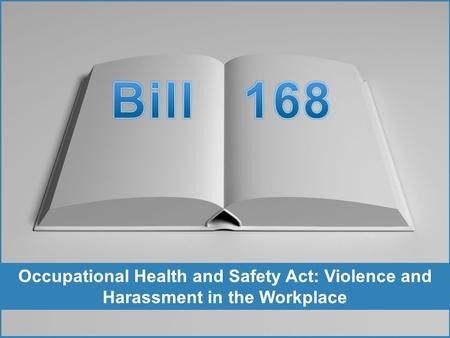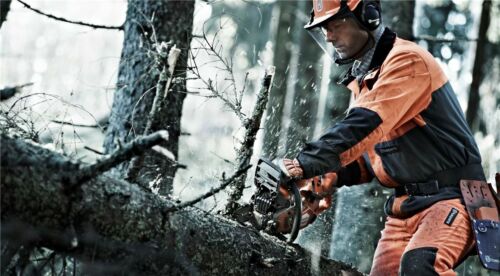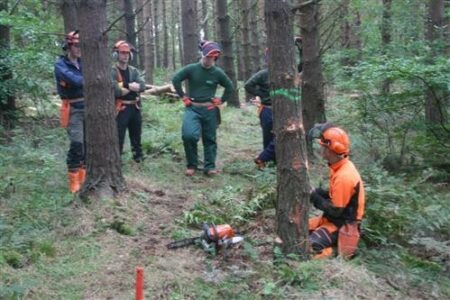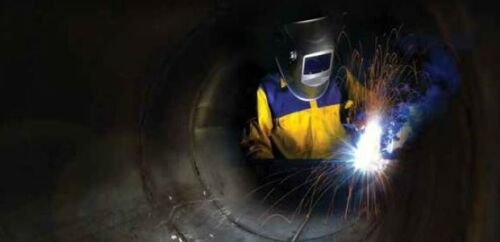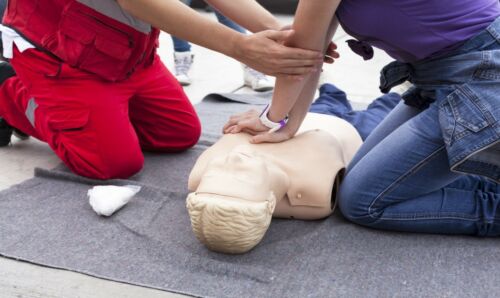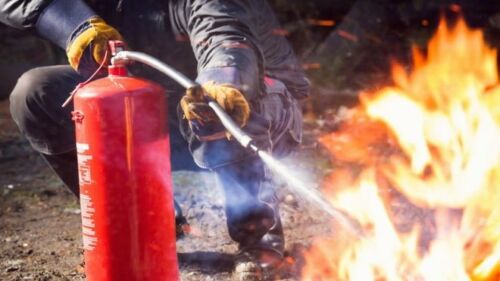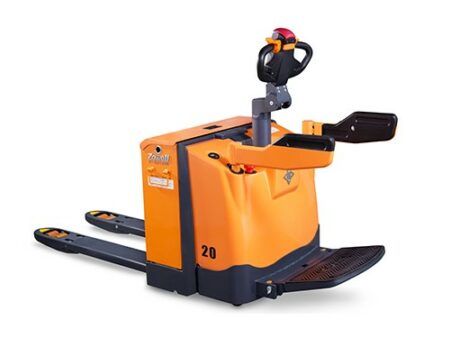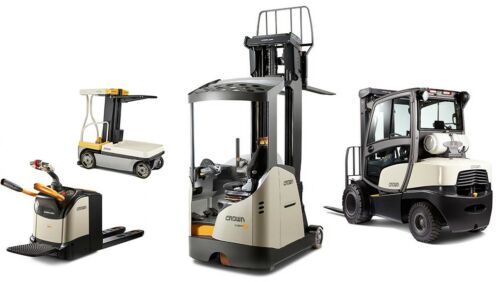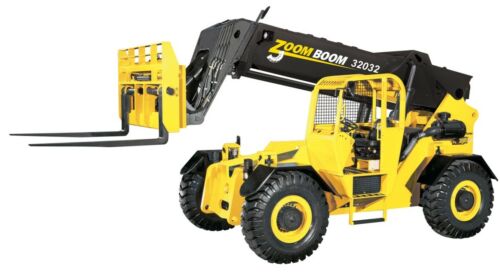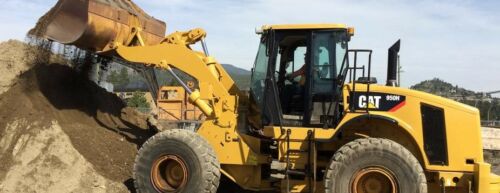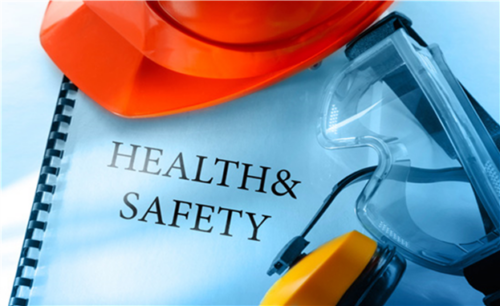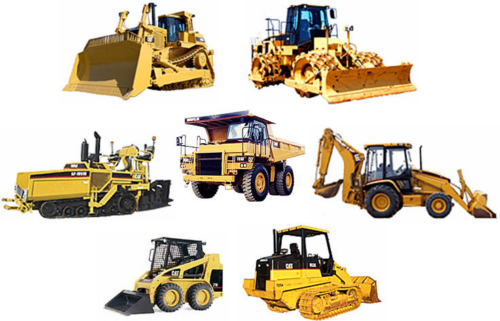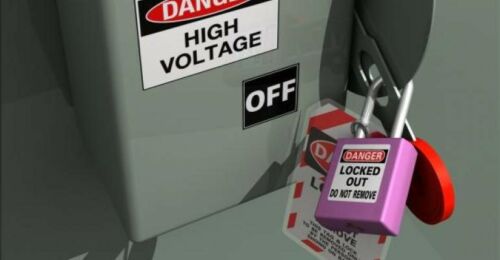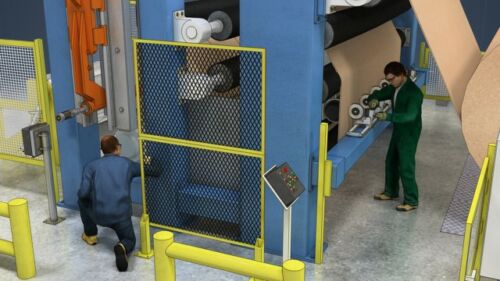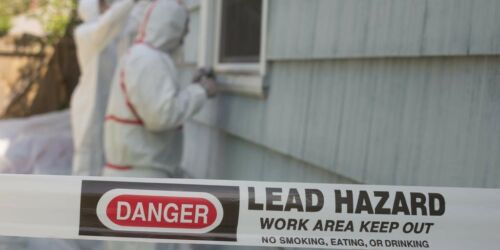 At C&R Safety Training Solutions, our Aerial/Elevated Work Platform Safety Course provides our participants with the knowledge and understanding of the safe operation and MOL standards, system components and protection systems. Approximately 20% of all lost time injuries can be contributed to falls in the workplace. Most injuries are same level, others are lower level. Ladders contribute to the more serious injuries or death. In fact, only motor vehicles contribute to a higher risk of workplace fatalities. You may have never personally experienced a fall from an Aerial Work Platform to the ground but that doesn’t mean that hazards don’t exist; less frequent hazards mean the hazard is hidden and makes it more dangerous. It’s imperative that workers understand the hazards involved when working at heights and consistently follow the rules and safety work procedures.
At C&R Safety Training Solutions, our Aerial/Elevated Work Platform Safety Course provides our participants with the knowledge and understanding of the safe operation and MOL standards, system components and protection systems. Approximately 20% of all lost time injuries can be contributed to falls in the workplace. Most injuries are same level, others are lower level. Ladders contribute to the more serious injuries or death. In fact, only motor vehicles contribute to a higher risk of workplace fatalities. You may have never personally experienced a fall from an Aerial Work Platform to the ground but that doesn’t mean that hazards don’t exist; less frequent hazards mean the hazard is hidden and makes it more dangerous. It’s imperative that workers understand the hazards involved when working at heights and consistently follow the rules and safety work procedures. At C&R Safety Training Solutions, our Asbestos Awareness Program provides our participants with the knowledge and understanding when working with Asbestos. This course will guide you through all aspects of Asbestos, from the hazards that are associated with Asbestos to how to protect yourself with safe work practices. Our comprehensive course will explain in detail what you need to know and emphasize key points. The course has been designed to meet and exceed Occupational Health and Safety Guidelines, so by completing this course, you can improve your knowledge of an important part of workplace safety. It’s imperative that workers understand the hazards involved when working with Asbestos and consistently follow the rules and safety work procedures.
At C&R Safety Training Solutions, our Asbestos Awareness Program provides our participants with the knowledge and understanding when working with Asbestos. This course will guide you through all aspects of Asbestos, from the hazards that are associated with Asbestos to how to protect yourself with safe work practices. Our comprehensive course will explain in detail what you need to know and emphasize key points. The course has been designed to meet and exceed Occupational Health and Safety Guidelines, so by completing this course, you can improve your knowledge of an important part of workplace safety. It’s imperative that workers understand the hazards involved when working with Asbestos and consistently follow the rules and safety work procedures.
Bill-168 Training
Our Bill-168 course covers all legislative requirements according to the Occupational Health and Safety Act. It is designed to assist companies, supervisors and workers with the knowledge and understanding of their rights and responsibilities. Course Content- Duties and responsibilities according to the Act
- Rights and due diligence according to legislation
- Reporting
- Case study discussions
 Chainsaw Safety Training provides users with the knowledge and understanding of operating a chainsaw, proper use of personal protective equipment, maintenance and understanding felling, Limbing and bucking procedures. These techniques are based around and follow the Ministry of Labour (MOL) guidelines.
Chainsaw Safety Training provides users with the knowledge and understanding of operating a chainsaw, proper use of personal protective equipment, maintenance and understanding felling, Limbing and bucking procedures. These techniques are based around and follow the Ministry of Labour (MOL) guidelines. This program is designed to provide the participants with in-class learning with a site-specific practical training component. Upon completion, participants will be knowledgeable about confined space entry requirements under the Occupational Health and Safety Act, and will be able to recognize confined spaces, describe the major hazards, identify controls, and perform a confined space rescue.
This program is designed to provide the participants with in-class learning with a site-specific practical training component. Upon completion, participants will be knowledgeable about confined space entry requirements under the Occupational Health and Safety Act, and will be able to recognize confined spaces, describe the major hazards, identify controls, and perform a confined space rescue. Our interactive Ergonomics course is designed for participants to understand the science of ergonomics, minimize injuries due to chronic physical and psychological stresses while maximizing productivity and efficiency. Reducing injuries thus reduces worker’s compensation claims in this area which in turn reduces the agency’s premiums. The visible cost is estimated to be 15 to 20 billion dollars a year in worker’s compensation costs. Reducing the injuries reduces those visible costs but also the invisible costs. These include absenteeism, loss of productivity, rework, lower morale, turnover, other employees having to complete absent employees’ tasks. recognize, substitute and eliminate.
Our interactive Ergonomics course is designed for participants to understand the science of ergonomics, minimize injuries due to chronic physical and psychological stresses while maximizing productivity and efficiency. Reducing injuries thus reduces worker’s compensation claims in this area which in turn reduces the agency’s premiums. The visible cost is estimated to be 15 to 20 billion dollars a year in worker’s compensation costs. Reducing the injuries reduces those visible costs but also the invisible costs. These include absenteeism, loss of productivity, rework, lower morale, turnover, other employees having to complete absent employees’ tasks. recognize, substitute and eliminate. This course provides workers with the basic fall prevention information they require to work safely in areas where they may be exposed to fall hazards. Participants receive the most up-to-date information with hands-on instruction from industry experts and trained adult educators who are experienced in working at heights.
This course provides workers with the basic fall prevention information they require to work safely in areas where they may be exposed to fall hazards. Participants receive the most up-to-date information with hands-on instruction from industry experts and trained adult educators who are experienced in working at heights. Our fire safety/extinguisher course teaches participants and workplaces about the legislated fire safety responsibilities of the employer and the worker. We will discuss safe work practices related to fire prevention and provides practical information about emergency response in situations involving fire.
Our fire safety/extinguisher course teaches participants and workplaces about the legislated fire safety responsibilities of the employer and the worker. We will discuss safe work practices related to fire prevention and provides practical information about emergency response in situations involving fire. At C&R Safety Training Solutions, our Class III Forklift Safety Course provides our participants with the knowledge and understanding of the safe operation and MOL standards, system components and protection systems. Here at C&R Safety Training Solutions we offer a half day interactive safe forklift operation course according to Ministry of Labour standards, guidelines and regulations on the principles.
At C&R Safety Training Solutions, our Class III Forklift Safety Course provides our participants with the knowledge and understanding of the safe operation and MOL standards, system components and protection systems. Here at C&R Safety Training Solutions we offer a half day interactive safe forklift operation course according to Ministry of Labour standards, guidelines and regulations on the principles. Forklift Classes 1 – 5 Here at C&R Safety Training Solutions we offer a one-day interactive safe forklift operation course according to Ministry of Labour standards, guidelines and regulations on the principles of:
Forklift Classes 1 – 5 Here at C&R Safety Training Solutions we offer a one-day interactive safe forklift operation course according to Ministry of Labour standards, guidelines and regulations on the principles of:- Understanding the limitations that affect truck stability and safe loading criteria
- Understanding the fundamentals of handling high-risk loads
- Knowing the legal responsibilities associated with lift trucks
- Understanding the legal standards set out in the Occupational Health and Safety Act
- Hazard recognition in advance situational risks in and around the lift truck
 Forklift Classes 1 – 5 Here at C&R Safety Training Solutions we offer a one-day interactive safe forklift operation course according to Ministry of Labour standards, guidelines and regulations on the principles of:
Forklift Classes 1 – 5 Here at C&R Safety Training Solutions we offer a one-day interactive safe forklift operation course according to Ministry of Labour standards, guidelines and regulations on the principles of:- Understanding the limitations that affect truck stability and safe loading criteria
- Understanding the fundamentals of handling high-risk loads
- Knowing the legal responsibilities associated with lift trucks
- Understanding the legal standards set out in the Occupational Health and Safety Act
- Hazard recognition in advance situational risks in and around the lift truck

Forklift Class 7 – Rough Terrain
Here at C&R Safety Training Solutions we offer a one-day interactive safe Rough Terrain forklift operation course according to Ministry of Labour standards, guidelines and regulations on the principles of:
- Understanding the limitations that affect truck stability and safe loading criteria
- Understanding the fundamentals of handling high-risk loads
- Knowing the legal responsibilities associated with lift trucks
- Understanding the legal standards set out in the Occupational Health and Safety Act
- Hazard recognition in advance situational risks in and around the rough terrain lift truck
- Hazards associated with the telescopic boom

Forklift Class 7 (Propane) – Rough Terrain
Here at C&R Safety Training Solutions we offer a one-day interactive safe Rough Terrain forklift operation course according to Ministry of Labour standards, guidelines and regulations on the principles of:
- Understanding the limitations that affect truck stability and safe loading criteria
- Understanding the fundamentals of handling high-risk loads
- Knowing the legal responsibilities associated with lift trucks
- Understanding the legal standards set out in the Occupational Health and Safety Act
- Hazard recognition in advance situational risks in and around the rough terrain lift truck
- Hazards associated with the telescopic boom
 Our program is designed for persons operating a front-end loader in the workplace. The training will cover a combination of on-the-job and classroom training. The operator/trainee must pass the classroom training and written test as well as pass a demonstration of skills such as operating the front-end loader on-site demonstrating a pre-equipment inspection, start-up procedures, safe operation, and shut down procedures.
Our program is designed for persons operating a front-end loader in the workplace. The training will cover a combination of on-the-job and classroom training. The operator/trainee must pass the classroom training and written test as well as pass a demonstration of skills such as operating the front-end loader on-site demonstrating a pre-equipment inspection, start-up procedures, safe operation, and shut down procedures. Our program at C&R Safety Training Solutions is designed for persons operating heavy equipment in on-site specific workplaces. The training will cover a combination of on-the-job and classroom training. The operator/trainee must pass the classroom training and written test as well as pass a demonstration of skills such as operating a front-end loader, backhoe, excavator, bulldozer, skid-steer and crawlers on-site demonstrating a pre-equipment inspection, start-up procedures, safe operation, and shut down procedures.
Our program at C&R Safety Training Solutions is designed for persons operating heavy equipment in on-site specific workplaces. The training will cover a combination of on-the-job and classroom training. The operator/trainee must pass the classroom training and written test as well as pass a demonstration of skills such as operating a front-end loader, backhoe, excavator, bulldozer, skid-steer and crawlers on-site demonstrating a pre-equipment inspection, start-up procedures, safe operation, and shut down procedures. At C&R Safety Training Solutions we are committed to the health and safety of everyone involved we it comes to moving large and heavy equipment and materials when hoisting. In many industries, when the movement of a large object is required, a crane is brought in to help lift the load. In many ways, cranes are helpful and convenient pieces of equipment. But we can’t forget that cranes are also dangerous, especially when the load they will be carrying has not been rigged properly.
At C&R Safety Training Solutions we are committed to the health and safety of everyone involved we it comes to moving large and heavy equipment and materials when hoisting. In many industries, when the movement of a large object is required, a crane is brought in to help lift the load. In many ways, cranes are helpful and convenient pieces of equipment. But we can’t forget that cranes are also dangerous, especially when the load they will be carrying has not been rigged properly.
This course is designed to help workers, supervisors and workplaces establish and implement a safe work procedure to unwanted electrical, hydraulic, pneumatic, kinetic and potential energy sources that cause injury or death in the workplace.
Course Content
- Hazards involved with improper lockout tag out procedures
- Rights and responsibilities of all workplace parties according to the Act
- The 6-step process to lockout tag out
- Understanding energy sources
- Implementing policies and procedures
- Preparing an action plan
- Recognize, assess and control of all parties to related hazards
 C&R Safety Training Solutions offers a half-day course on machine guarding. When machines are not properly guarded or locked out during maintenance, repair and other activities at industrial sector workplaces, workers can be exposed to several hazards. These hazards can result in serious injuries such as amputations of limbs or death. Hazards can include:
C&R Safety Training Solutions offers a half-day course on machine guarding. When machines are not properly guarded or locked out during maintenance, repair and other activities at industrial sector workplaces, workers can be exposed to several hazards. These hazards can result in serious injuries such as amputations of limbs or death. Hazards can include:- Exposure to in-running nip hazards, i.e. getting caught up in machinery and moving parts if equipment is not properly guarded.
- Exposure to hazardous motion, such as rotating machine parts, if equipment is not properly locked and blocked during maintenance and repair.
 C&R Safety Training Solutions is dedicated to your Health & Safety, our Lead Hazard Awareness course is designed to educate the learner in the awareness of working around lead. Lead is one of the most common toxic elements found in industry and is a leading cause of workplace illness. According to the Centers for Disease Control & Prevention, despite improvements in public health policies and substantial reductions in blood lead levels (BLLs) in adults, lead exposure remains an important health problem worldwide. Nearly every construction trade has the opportunity for potential exposure to lead during “normal” construction tasks including carpenters, electricians, ironworkers, painters, plumbers, sheet metal workers, among others.
C&R Safety Training Solutions is dedicated to your Health & Safety, our Lead Hazard Awareness course is designed to educate the learner in the awareness of working around lead. Lead is one of the most common toxic elements found in industry and is a leading cause of workplace illness. According to the Centers for Disease Control & Prevention, despite improvements in public health policies and substantial reductions in blood lead levels (BLLs) in adults, lead exposure remains an important health problem worldwide. Nearly every construction trade has the opportunity for potential exposure to lead during “normal” construction tasks including carpenters, electricians, ironworkers, painters, plumbers, sheet metal workers, among others.


